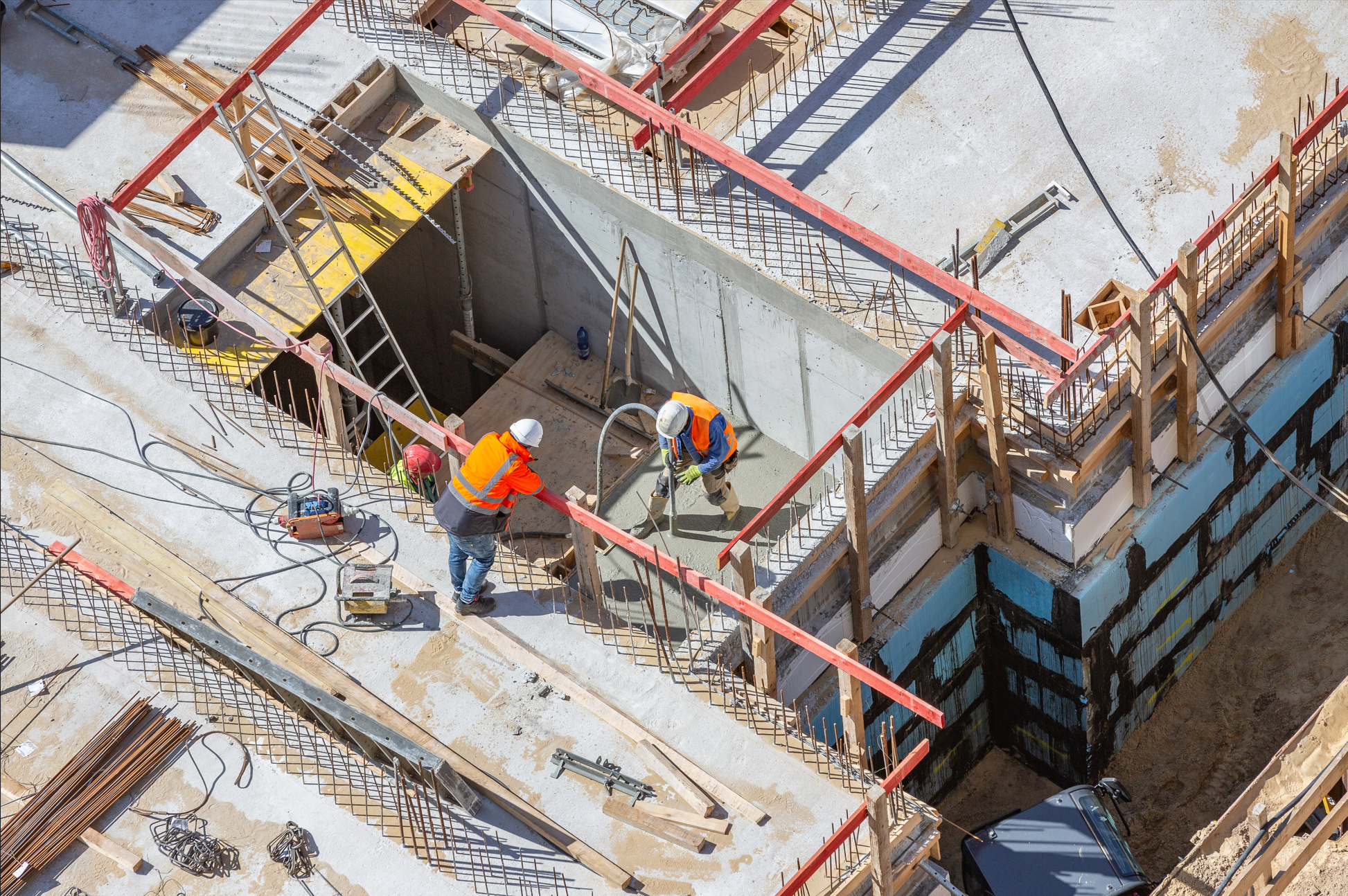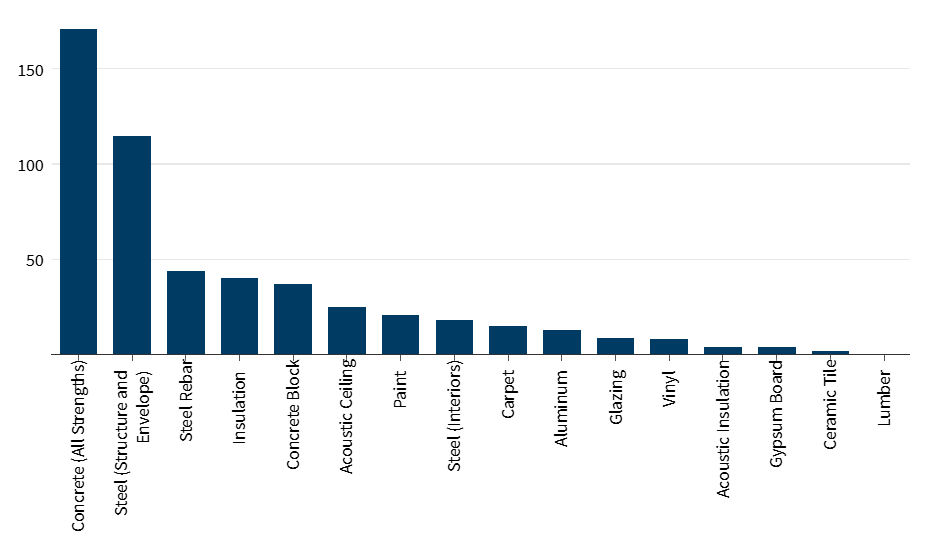
The building decarbonization world overlaps with the industrial decarbonization universe when it comes to decarbonizing building materials. According to a September 2023 report published by RMI and the U.S. Green Building Council, embodied carbon emissions are responsible for up to six percent of domestic emissions — equating to the state of California’s wholesale carbon emissions.
Buildings’ embodied carbon emissions refer to the carbon emitted during the manufacturing, transportation, construction, and end-of-life disposal of the materials used to erect buildings. The carbon intensity of some of these materials is dense (Figure 1). Concrete production, for instance, is an especially carbon-intensive industrial sector, encapsulating one percent of domestic emissions by itself.
Figure 1: Estimated Annual Federal Carbon Emissions Distribution from Common Building Materials

Amounts in thousands of tons of CO2e. | Source: RMI.
Other popular construction materials in the U.S. include steel, insulation, glass, and others that all carry their own carbon footprints. Common current methods of decreasing materials’ imbued carbon values include building with recycled steel and glass, or simply utilizing fewer materials. Emerging solutions include concrete made with less carbon-intensive inputs or steel made with hydrogen instead of coal. The Inflation Reduction Act (IRA) and the Infrastructure Investment and Jobs Act (IIJA), both introduced millions in funding to pursue embodied carbon reduction, largely in federal buildings.
A total of $2.3 billion across three programs managed by three different federal agencies is bookmarked for lessening the amount of embodied carbon in domestic buildings (Table 1). The bulk of this funding, $2.25 billion through IRA, is not Justice40 covered and is only allocable to federal agencies via direct federal spending.
Table 1: IIJA and IRA Programs Funding Embodied Carbon Reduction

Source: Atlas Buildings Hub, Federal Policy & Funding Dashboard and Climate Program Portal, Outcomes Dashboard.
The Use of Low-Carbon Materials program directs the General Services Administration (GSA) in both limiting carbon emissions from federal buildings — in leading by example fashion — and to fund research and development into low-carbon building materials. It has awarded about $2.8 billion to hundreds of projects nationwide, utilizing IRA funds and GSA appropriations. Some of its largest projects include decarbonization of ports, federal labs, courthouses, and federal agency headquarters through building retrofits and new construction. Arizona has received a disproportionately high number of awards at $400.5 million (14.5 percent of total awarded funding), followed by Texas ($347.1 million, 12.5 percent), Missouri ($246.6 million, 8.9 percent), and Colorado ($216.5 million, 7.8 percent).
Similarly, the Low Embodied Carbon Labeling for Construction Materials program funds the Environmental Protection Agency with $100 million to incubate a labeling program that identifies and labels construction materials meant to be used in federal building construction. Specifically, labels indicate materials with less embodied carbon than industry averages. This initiative, in conjunction with other federal programs, seek to bring U.S. federal buildings to net zero emissions by 2050. Thus far, there have not been any reported awards of this funding; Buildings Hub will track this funding as changes are announced.
Finally, the Energy Efficiency Materials Pilot Program, popularly known as the Renew America’s Nonprofits Program, is the only funding pot open to non-federal agencies for embodied carbon reduction. It is focused on slashing carbon emissions to the end of improving health and safety and lowering utility bills for 501(c)(3) nonprofits. The program’s funding was entirely expended in October 2023 with a $45 million award to nine nonprofits, who have established partnerships with 40 partners to deploy these improvements. On Oct. 1, a second funding opportunity for $2 million opened; the application closes Nov. 12. Remaining funding will likely be used for technical assistance and administrative purposes. About 300 projects are active across 28 states and three territories. While most of the funding is directed at retrofits for the purpose of energy use reduction, integration of low-carbon insulation and other reduced embodied carbon materials qualify for funding and seem to be in use in Michigan.
These public efforts are significant and represent what is likely the first substantive investment into embodied carbon reduction. Private efforts are also active on this front. One example is Sublime Systems’ development of low-carbon cement — which was recently poured out for the first time for a massive office building in Boston and whose development was funded by an industrial decarbonization IRA program. Large companies such as Meta are also investing in at least one clean concrete startup, while Sublime Systems is also receiving millions of dollars in backing from CRH and Holcim, two building materials providers. Interest in decarbonizing buildings materials is coming from the top-down and the bottom-up, signifying an important shift in the modern building decarbonization zeitgeist.



